On September 27, 2023, a painting depicting two saints, a bishop and a portrait of the patron made its appearance at theMillon auction held in Cremona: it was the only surviving fragment of Boccaccio Boccaccino’s so-called Fodri Altarpiece. Also known of the work today is the contract by which, on April 18, 1523, the artist undertook to create a work of monumental size on behalf of Antonio Maria Fodri, who wanted it for the family chapel in the church of San Pietro al Po in the city of the Torrazzo. The fragment, which was immediately notified by the Superintendence, was purchased by the Diocese of Cremona, and after careful restoration it became a full part of the collections of the recently opened Diocesan Museum (then brand new, since it was inaugurated in 2021), already the custodian of three other works by Boccaccino, namely theBoncompagni Ludovisi Annunciation, the Crucifixion and the Holy Family with Mary Magdalene. Also in 2023, attention to this painter resumed with momentum: the Madonna and Child from the Civic Museums of Padua (1500-1501) was exhibited in a Renaissance room in Ferrara. Ercole de’ Roberti and Lorenzo Costa at Palazzo dei Diamanti, an exhibition curated by Vittorio Sgarbi and Michele Danieli, and in the following “installment,” The Sixteenth Century in Ferrara, The Adoration of the Shepherds from Naples and Madonna and Child from the Cavallini Sgarbi collection were presented. In May ’23 the first exhibition on Boccaccino was inaugurated at Brera, curated by Maria Cristina Passoni: a dossier exhibition that placed four of his paintings in dialogue with other early 16th-century Venetian school paintings. At last, then, the spotlight began to be turned on a fine interpreter who was defined by Luigi Lanzi, in his Storia pittorica della Italia published between 1795 and 1796, as “the best modern among the ancients and the best antique among the moderns.”
Today, in the rooms of the Diocesan Museum that stands next to Cremona Cathedral, in which Boccaccio Boccaccino worked as a fresco painter, an exhibition curated by Francesco Ceretti and Filippo Piazza takes place that traces the artist’s parabola from his beginnings to the Fodri Altarpiece, the last work painted before his death five hundred years ago in 1525. Strictly monographic, the exhibition brings together 17 paintings, that is, most of Boccaccino’s corpus, which in total has about 30 movable works, according to current attributions. Missing, however, are the St. Vincent Altarpiece, the St. Jerome (1506-1507) and the eight detached frescoes of unknown provenance with heads of apostles and angels preserved in the Museo Civico Ala Ponzone in Cremona: as the curators explain in the catalog, the first two works are in very precarious conservation conditions and their movement was not possible.

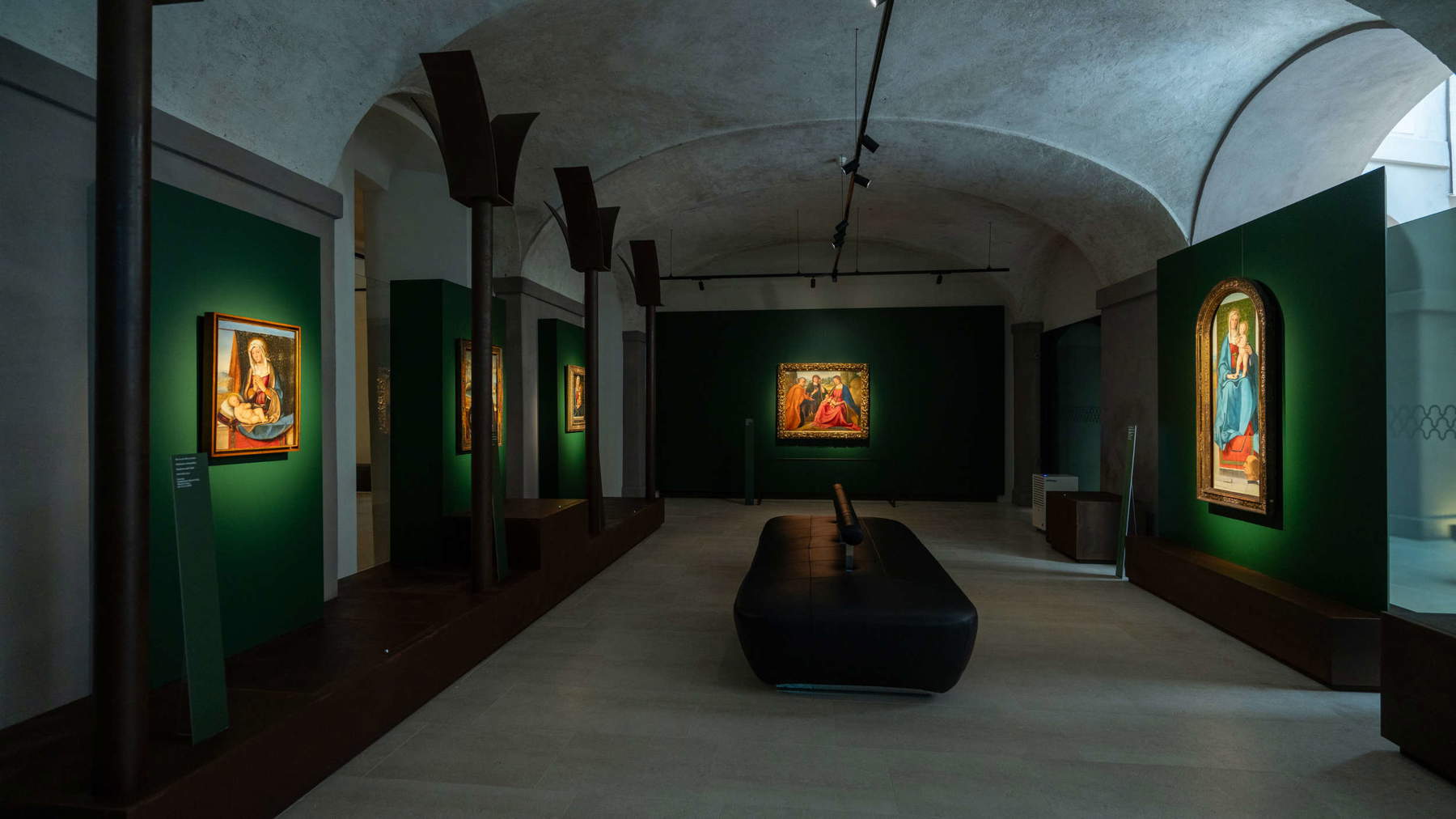

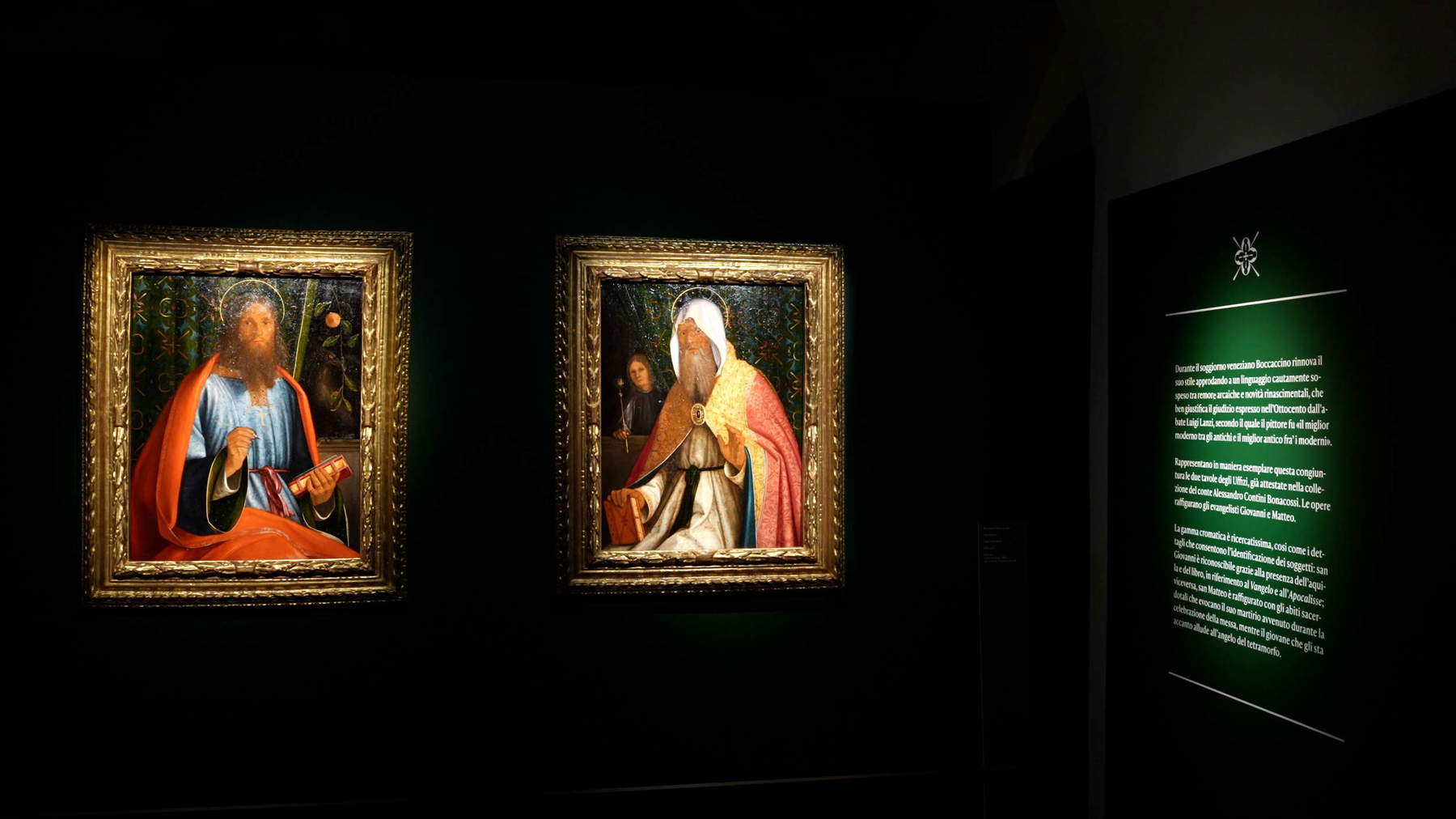
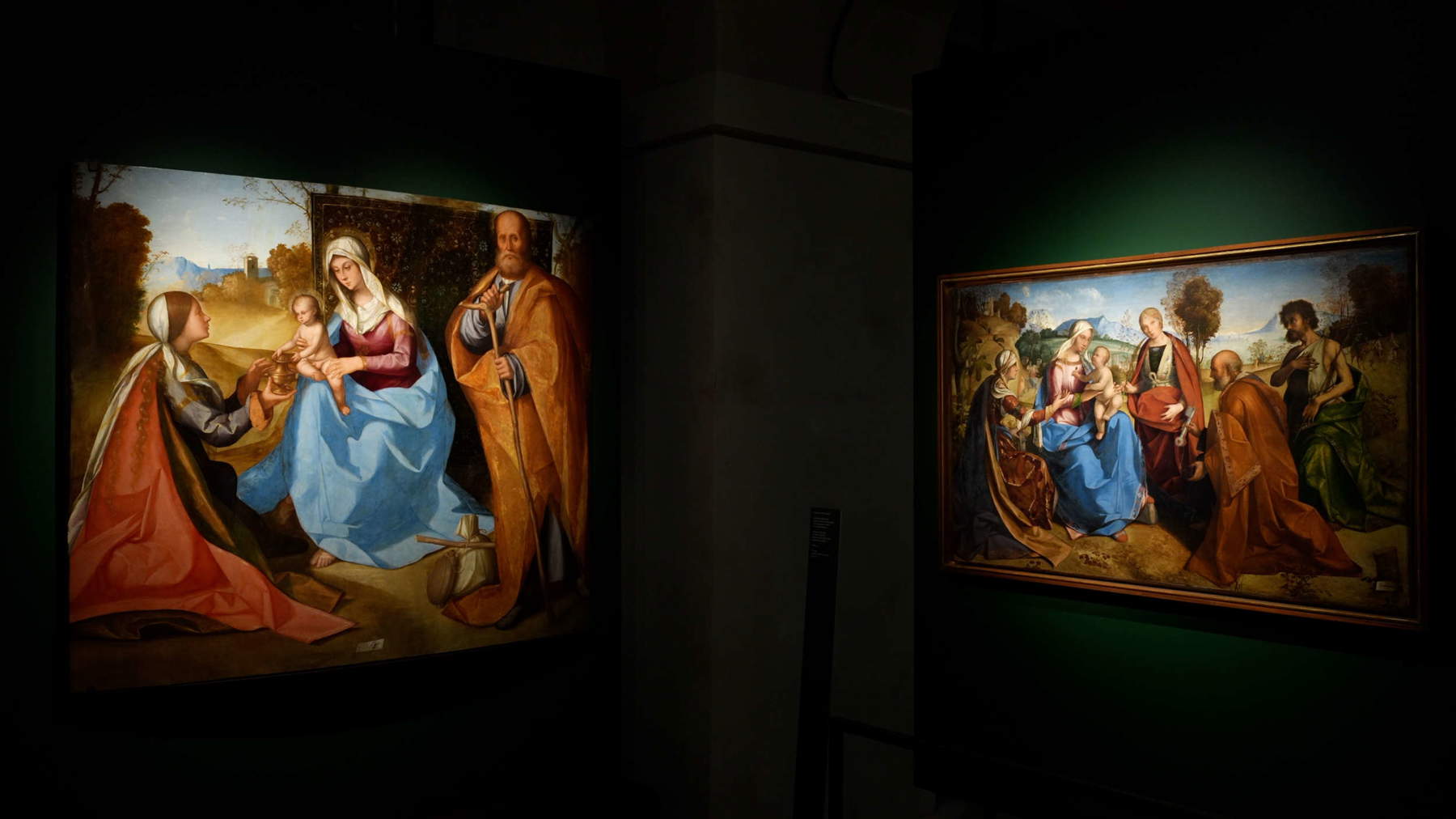

The exhibition layout, based on a chronological criterion, makes it possible to follow the biographical events of the painter step by step: Boccaccino saw the light between 1462 and 1466 probably in Ferrara, at whose Este court his father, from Cremona, was magister “acupittore,” that is, embroiderer. This was by no means a marginal profession, if one considers that the monetary value of fine textiles was at one time very high, as economic research conducted on the occasion of La fabbrica del Rinascimento (edited by Guido Beltramini, Davide Gasparotto and Mattia Vinco, Vicenza, Basilica Palladiana, 2021) has made known to the general public. It is therefore not surprising that, having taken up brushes and palette, the artist was able to develop a remarkable skill in the rendering of fine and ornate fabrics, as evidenced by both the drapes of’honor on which his Madonnas are silhouetted as well as the robes and borders worn by his characters and which owe so much to Boccaccino’s stay in Venice where - yesterday as today, and it is enough to mention the prestigious Tessitura Luigi Bevilacqua, active since 1499 - the manufactories produced highly coveted velvets, brocades, damasks, and silk satins.
In 1493 the painter is documented in Genoa, where he made a Maestà, yet always maintained a close relationship with his father’s city, as evidenced by a Madonna and Child now lost but signed “Bocacinus cremo[nen]sis 149[.].” In the 1990s the young artist traveled between Emilia and Milan, looking to Ercole de’ Roberti, Lorenzo Costa and Francesco Francia on the one hand and Giovanni Boltraffio and Bramantino on the other. The scarcity of reliable information on Boccaccio Boccaccino’s early years of activity was interrupted in 1497, when Antonio Costabili, ambassador of the Este family in Milan, brought him back to Ferrara after he had taken him from the prison in which he was imprisoned for injuring a miniaturist: a fuming personality, as we shall see in a moment. Costabili then presented to Hercules I-and the original of the letter is on display in the first room of the Diocesan Museum in Cremona-who he considered the only artist worthy to replace Ercole de’ Roberti.
We know that a few years later Boccaccino ran a well-established workshop in Ferrara and was commissioned to decorate the apse basin of the cathedral. February 8, 1500, however, proved to be a fateful day: the artist was in fact guilty of femicide. A literary source reports that Boccaccino murdered his wife after discovering an infidelity; perhaps to escape further condemnation, he moved to Venice, where he remained until 1506: "It was the beginning of an exciting new chapter for Boccaccino depinctore,“ the curators write in the catalog, ”which would see him a protagonist in the lagoon in the unrepeatable years when the star of Giorgione da Castelfranco was already shining, when the elderly Giovanni Bellini was still active and, not much later, the young Titian would appear. And here, with works datable to the very first years of the 16th century, we enter the heart of the exhibition: the incipit is entrusted to the aforementioned Adoration of the Shepherds from Capodimonte, revealing assonances both from Ferrara and German suggestions drawn in particular from the engravings of Martin Schongauer. And the fascination with Nordic painting did not fail to exert its effects in Boccaccino’s later works where his adherence to the shocking innovations of Albrecht Dürer is explicit.
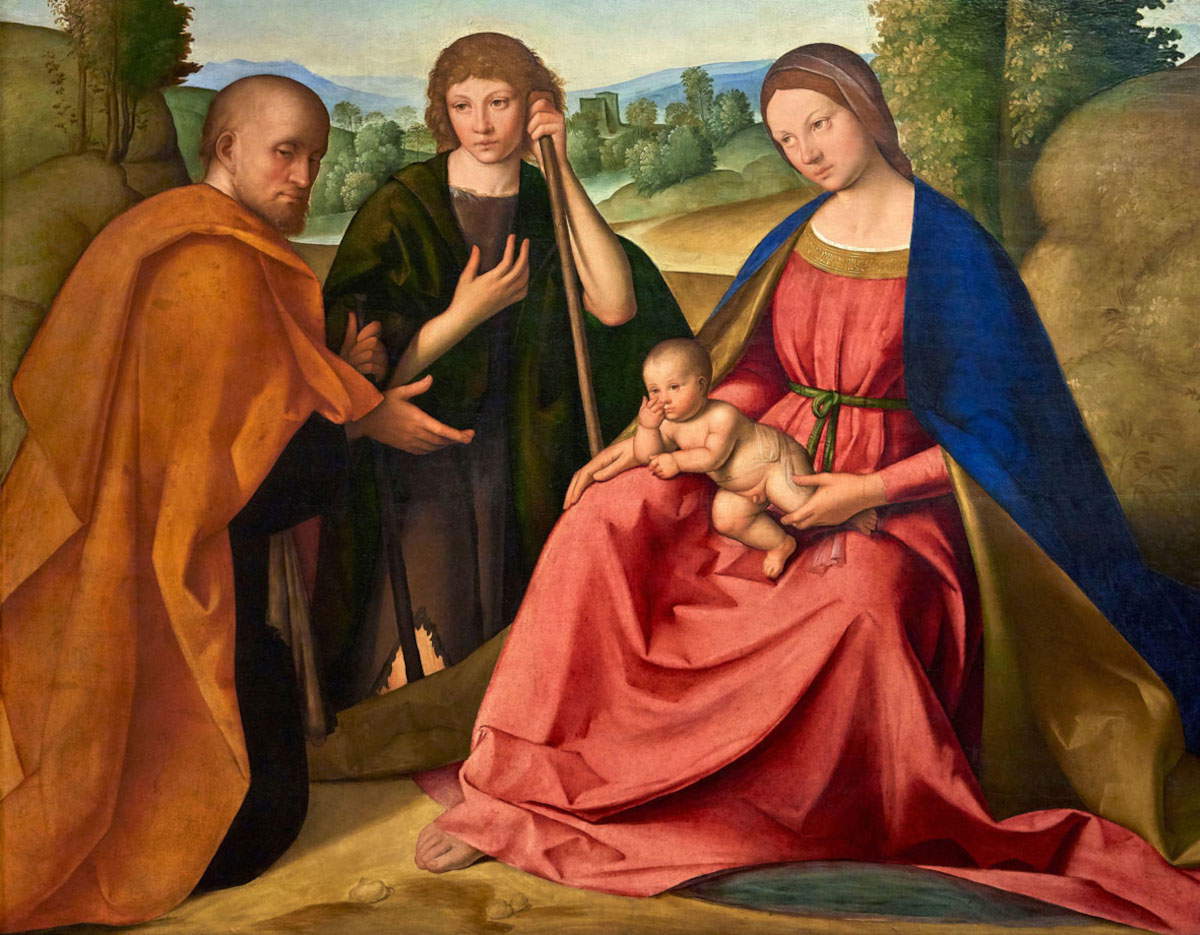
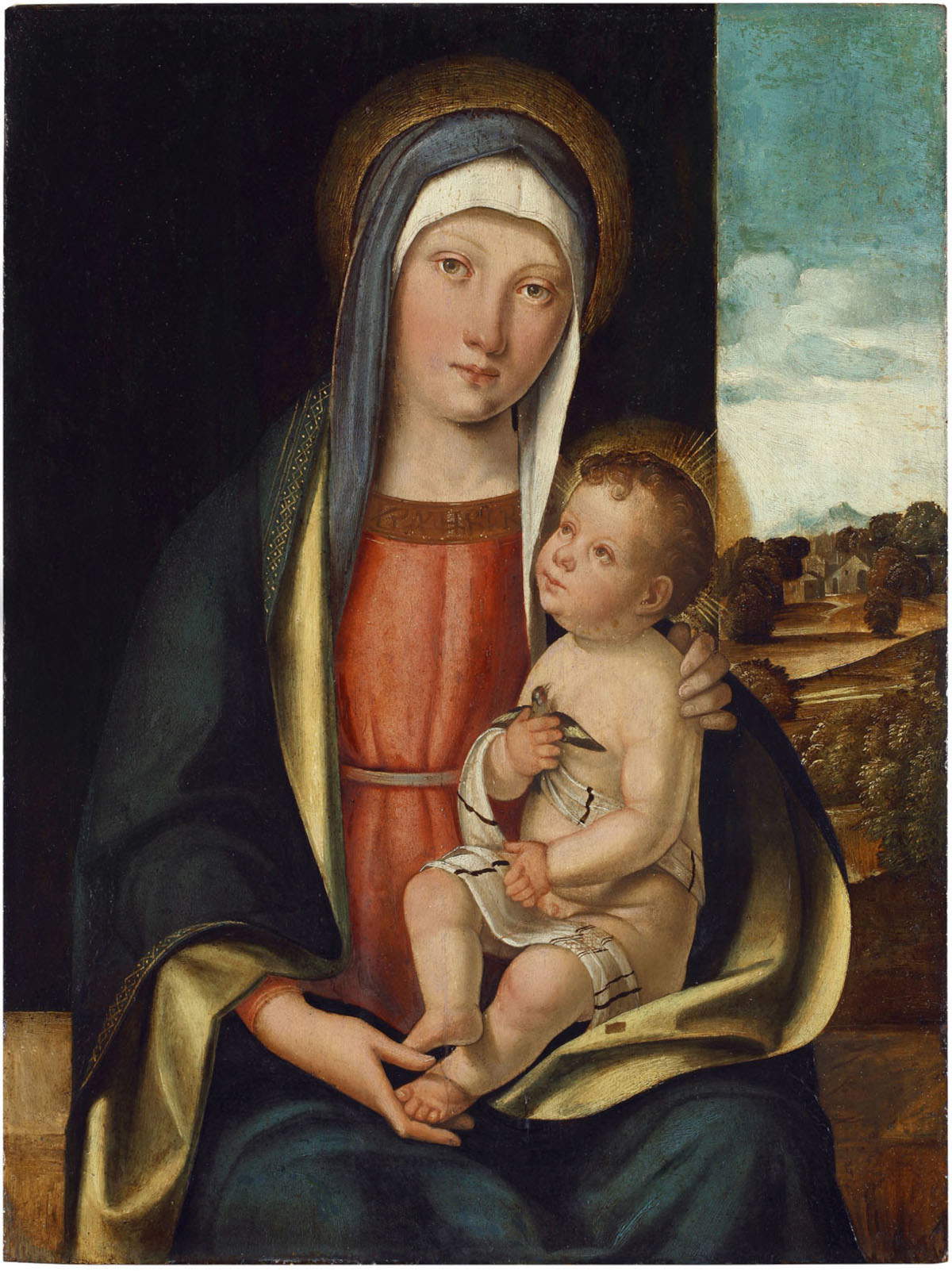
The exhibition then continues with a series of highly refined Madonnas with Child, the painter’s favorite subject during his Venetian sojourn. Undoubtedly in the Serenissima, the Cremonese immediately welcomed the lesson of Giovanni Bellini, adopting both his compositional schemes and more nuanced tonal passages that matured after his acquaintance with Giorgione. At this age, however, Boccaccino’s pictorial achievements are still contaminated with typically Lombard features. Creating a break in the sequence of Marian images are two large panels with St. John and St. Matthew, which Filippo Piazza, in the catalog entry, approximates to works painted by Giorgione around 1502 (some have speculated that the two saints derive from a dismembered monumental work, but restorations have certified the integrity of the margins). Certainly these works testify to the author’s achieved compositional and stylistic autonomy, for which the rendering of decorated, embroidered, pearl-studded textiles plays no small role, as mentioned above. The superstar of the exhibition, however, is the Zingarella lent by the Uffizi, with her very clear and magnetic eyes, face that looks like a portrait and that blue scarf streaked with gold that frames her physiognomy. An unquestionable masterpiece that alone would be worth the trip to Cremona.
The display of the Madonna and Child between Saints John the Baptist and Catherine of Alexandria from the Museo Correr in Venice (1504-05) marks a new interest on the part of the painter in the iconography of the sacred conversation, to which the panel in the Museo Diocesano in Cremona from the church of Sant’Agata (1508) and the one from the Galleria Estense in Modena are also comparable, which, however, is dated in earlier years, around 1500-1501. Observing the latter, however, a doubt arose to the writer regarding the chronology proposed by the two curators and taken up by Alessandro Ballarin’s hypothesis (the adherence to the latter scholar’s research is, moreover, timely for the entire approach to Boccaccino). The feeling that the work gives back - the delicate colors and muted tones, the warm light, the compositional rhythm, a “doll-like” Baby Jesus, with perfect somatic features and not slightly deformed as in other Boccaccino works of that turn of’years, and then the respective heads of St. Joseph that seem to derive from the same model-appears in fact to be quite different from that of the works that flank it and that are dated between the stroke of 1500 and 1506. At an overall glance of the paintings on display, the Modena Holy Family would seem closer to the painting owned by the museum, dated 1508. A sensation that, moreover, Cavalcaselle also had, when in 1871 he traced this work now in the Galleria Estense back to the Cremonese sphere, attributing it to Boccaccino precisely because of the comparison with the Holy Family of Sant’Agata (the critical debate is appropriately reported by the card signed by Stefano Macconi). Francesco Cerretti reaffirms the conviction for a high chronology motivating it with the intersection of references to Leonardo’s sphere (for the shepherd Boltraffio is called into question, for the draperies Bramantino) to which are added Emilian accents (especially Lorenzo Costa) and a fully Giorgionesque landscape. The curator thus defines the work as a sort of “patchwork” of the painter’s formative experiences, while distancing it from the Cremonese painting are, for example, a marked gigantism of the figures and a different way of constructing the draperies. Inapposite considerations, especially considering the very accurate on Boccaccino conducted for this exhibition, but the beauty of being able to directly and simultaneously observe a large nucleus of an author’s work-a privilege made possible precisely by temporary exhibitions-can sometimes spark new reflections and debates, or on the contrary can consolidate interpretations.




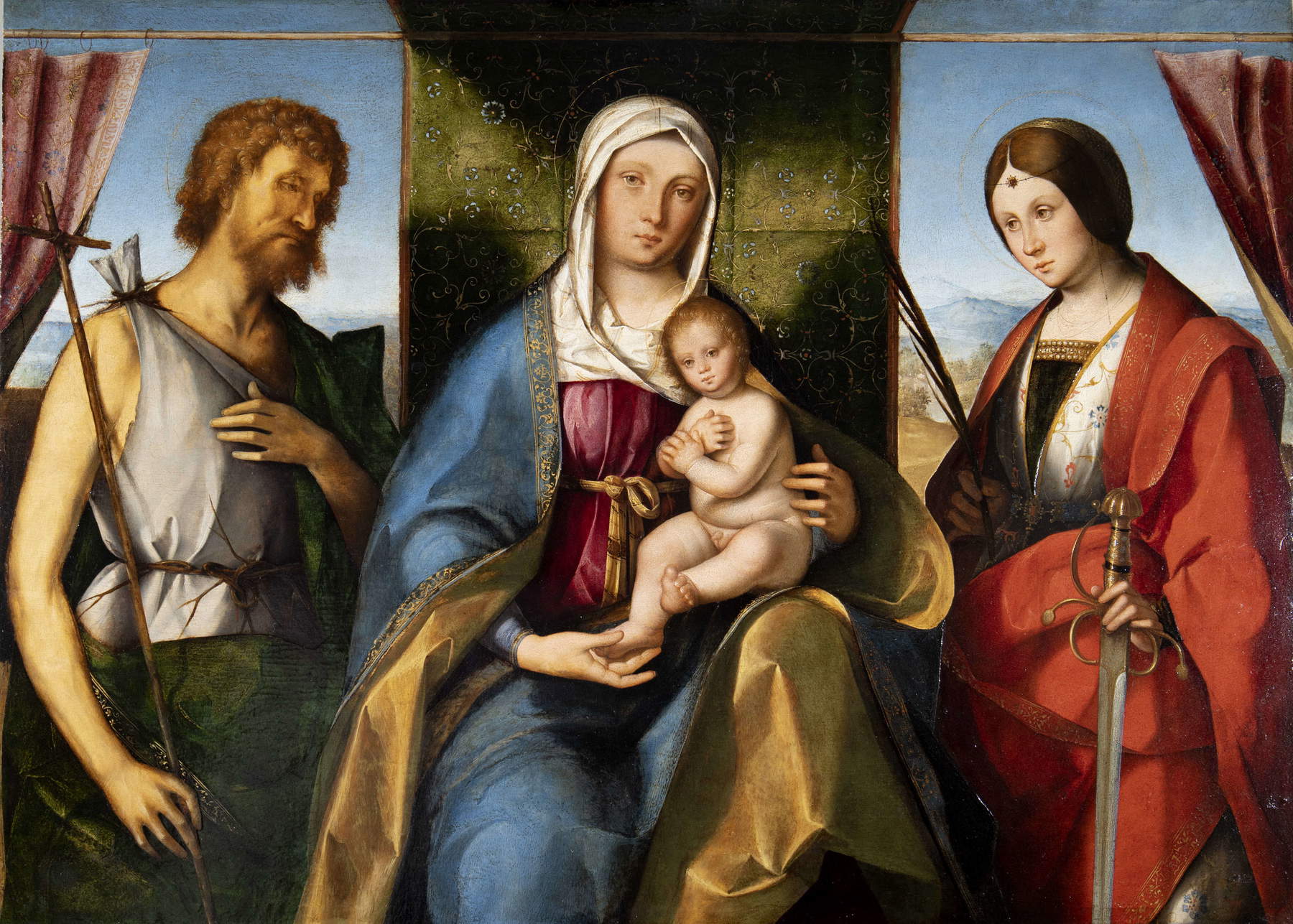

Picking up the thread of the installation, Boccaccio Boccaccino’s depth is evident in the Mystic Marriage of St. Catherine, with the six monumental figures set in a splendid landscape: "an immediate reflection of the arrival in the city [Venice, ed.] of the Feast of the Rosary, executed by Albrecht Dürer precisely in 1506 for the high altar of the church of San Bartolomeo in Rialto," Cerretti writes in the catalog. Still of absolute quality are the Crucifixion with donor, unfortunately much compromised, and theLudovisi Annunciation, the dating of which is close to the work commissioned by the massari of Cremona Cathedral, to which the artist devoted himself in 1507 by frescoing the apse basin, and then was commissioned to decorate the part of the nave between 1513 (after a probable trip to Rome) and 1519. Moreover, in these years the artist, though already established, chose to continue updating his language in light of the innovations brought to the cathedral by Romanino and Pordenone.
Instead, the painter’s maturity is documented by the Portrait of a Gentleman Holding a Skull (1515-16), the only autonomous portrait assigned to Boccaccino, for now, while the conclusion of the exhibition is entrusted to the focus on the so-called Fodri Altarpiece, already mentioned. In this work the painter shows that he was still receptive-at least as far as can be guessed from the portion that survived a probable fire-to the innovations introduced by Titian with the second version of the San Nicolò ai Frari altarpiece, now in the Pinacoteca Vaticana: in fact, the Cadorino developed a composition divided between an upper register, with the Madonna and Child in Glory, and a lower one, with the saints arranged in a row. A suggestion of great modernity immediately grasped by Boccaccino, who was therefore the first, as Piazza and Cerretti think, to introduce it in the Cremonese territory.


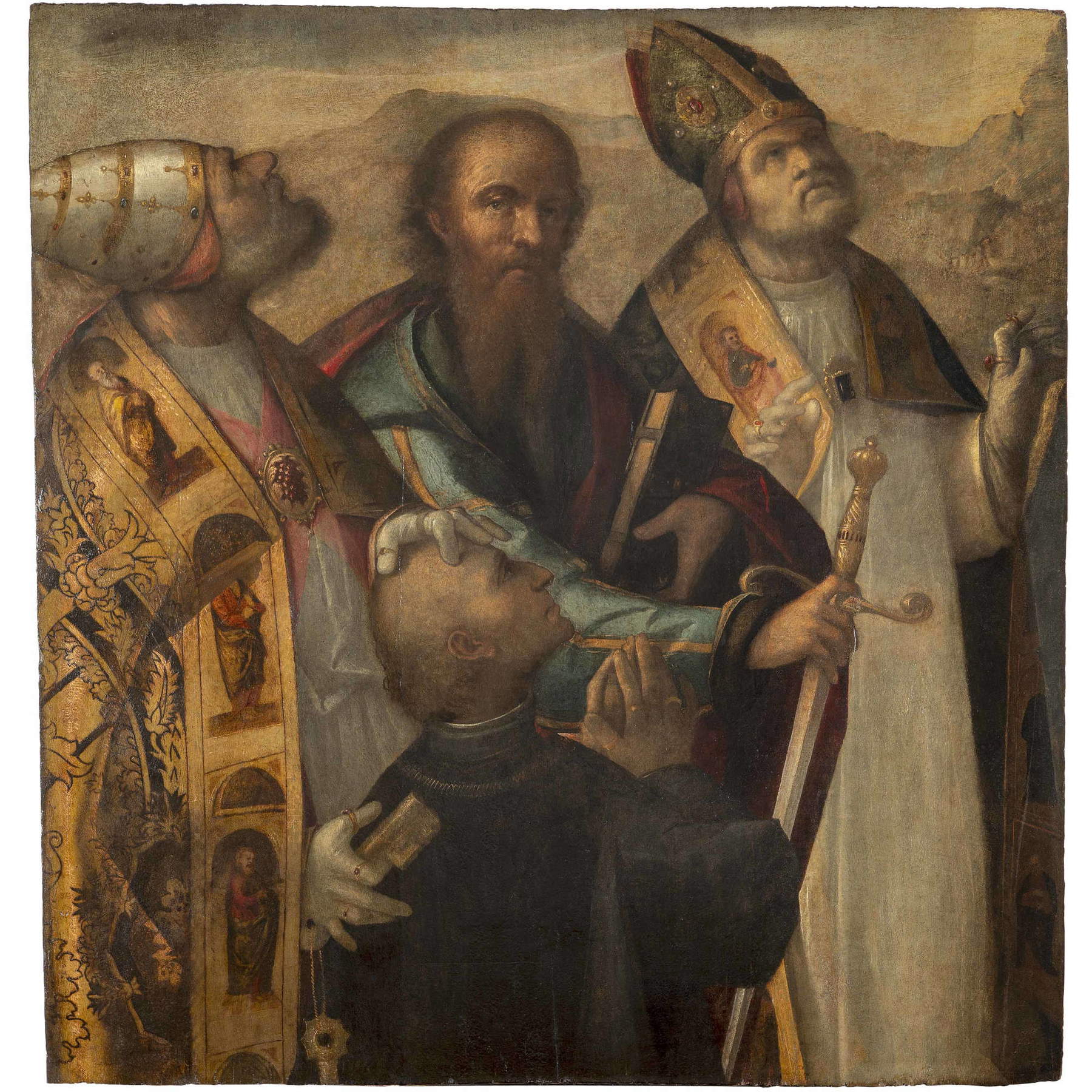
Having finished the visit to the exhibition, therefore, it can be said that the critical reinterpretation on the protagonist and the presentation to the public of numerous works by Boccaccio Boccaccino constitute more than due initiatives. Not only that: sometimes the “rediscoveries” of little-known authors turn out to be useful in making unpublished paintings re-emerge from private collections, the antiquarian market or even museums, thus expanding the catalog. The layout at the Diocesan Museum of Cremona is neat, the paintings stand out against a dark green background - like it or not, spotlights on paintings emerging from obscurity are very fashionable -, moreover, the captions on the main themes covered in the itinerary are exhaustive and help to understand the value of the protagonist and his role in the context of Northern Italy in the early Renaissance. Lastly, a mention of merit goes to the catalog published by Officina Libraria: the texts and files are written with an academic approach, reporting not only Boccaccino’s biography and the analysis of his works, but also the critical debate, with a rich apparatus of notes and a complete bibliography; very useful, in view of further research, are the registry and transcription of the documents on the artist preserved at the State Archives of Cremona. The layout and graphics are also definitely appreciable: no frills and no oddities (also very trendy), they facilitate the reading of the contents, which have been enriched with numerous comparative images.
Warning: the translation into English of the original Italian article was created using automatic tools. We undertake to review all articles, but we do not guarantee the total absence of inaccuracies in the translation due to the program. You can find the original by clicking on the ITA button. If you find any mistake,please contact us.